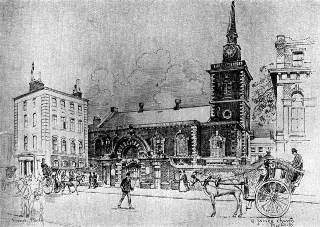thomas henry townsend + harriet willis
Thomas was born on 8 January 1783 in Westminster, the son of Phillip Townsend and his wife Elizabeth. He was baptised one month later, on 2 February, at St James Piccadilly, also known as St James Westminster, a church designed by Sir Christopher Wren and consecrated in 1684.
Thomas’ father ran a Poulterers shop at the corner of St Alban’s Street and St James’s Market near the Haymarket Theatre in Piccadilly. A poulter or poulterer was a merchant who traded in poultry and game and Thomas may have taken over his father’s shop as he also worked in the same trade.
On 26 October 1816, Thomas married Harriet Willis in Hammersmith. Harriet was born on 25 February 1796 and baptised at St James Piccadilly on 21 March; she was the daughter of Thomas Willis and his wife Harriet. Nothing is known of the Willis family but in later reminiscences, Charlotte Townsend stated that the family had ‘the finest ballroom in St James and known all over London.’
Thomas and Harriet remained in Westminster following their marriage and they went on to have twelve children but three died in infancy. Their first child, Elizabeth Mae, was born on 20 December 1817 and baptised at St James on 22 January 1818. Thomas Willis was born on 13 August 1819 followed by Harriet on 27 May 1821. She died on 9 December 1822 and three months later, their son James Willis was born. Charles was born on 28 January 1825 but died one week before his first birthday. On 13 November 1826, son George was born and later baptised on 8 March 1827 at St James. Phillip Henry was born on 15 July 1828 followed by twins William and Henry on 21 July 1830, Louisa on 24 September 1831 and Charlotte on 6 December 1833. They lost their third child on 24 Jun 1835 when one of the twins, five year old Henry, died. Their final child, Frederick, was born on 4 May 1836 and baptised at St James on 3 March 1837.
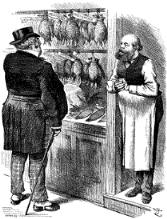
Rate Book entries between 1832 and 1840 list Thomas at 16 Charles Street in Westminster and he also appears in Trade Directories as a Poulter at the same address. It’s not clear from the entry whether he ran his business from the ground floor while the family lived in the two floors above or he had a shop elsewhere.
Thomas died in January 1841, aged 58 years, and was buried at All Souls Cemetery in Kensal Green on 28 January. In his will, he directed that the value of his life insurance policy be shared equally amongst his surviving chidren and the remainder of his estate, including the shop and its contents, the house and furniture as well as monies held in the Bank of England, was bequeathed to his wife. When the census was taken several months later, Harriet was still living on Charles Street along with seven of her nine surviving children — neither George nor Phillip have been found elsewhere in the census records — and Harriet continued to operate the business along with her husband’s assistant, John North, and her son John.
George was the first in the family to leave England when he sailed to America in 1849. Their daughter Elizabeth married George Edward Tilbury on 14 December 1850 at Holy Trinity in Paddington and they settled nearby on Newton Road and had four sons — George, Harvey, Algernon and Edward. Harriet continued to run the family business but by 1851, only son William was helping her. Her son James was living at home but was working as a Civil Engineer and youngest son Frederick was articling with an Architect. Thomas Willis was living nearby on Piccadilly Street where he ran his own hosiery business but Philip has not been found.
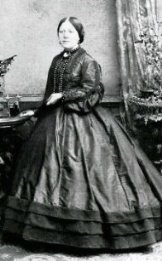
In 1853, James Willis sailed to Melbourne on board the Chusan and like many other young men, he headed straight for the gold diggings near Bendigo. His brother Philip also emigrated to Australia in the 1850s, although it is not know if he left before, after or with James, and settled in Williamstown, now a suburb of Melbourne. He married Grace West Emmett in Williamstown in 1857 and they had three children — Philip, Mary and Alfred. Philip had a varied career in Australia as various sources list his occupation as a saddler, teacher, writer and artist.
In 1861, Elizabeth and George Tilbury were living at 40 Western Villas in Paddington along with their three sons George, Harvey and Edward. Sadly, their fourth son, Algernon, had died in 1857. George was employed as Master of the Harness at the Department of the Pantechnicon. The Pantechnicon was a large shop on Belgrave Square that sold furniture and also offered storage facilities for its customers in its large warehouse. The company used a large covered wagon drawn by horses to pick up and deliver furniture and the wagon soon became known by the company name as a pantechnicon. As Master of the Harness, George was no doubt responsible for the horses and equipment.
There is a possible record for William in 1861 — a William Townsend appears in the census at 201 Sloane Street in Chelsea working as a poulterer for Francis Caister. Harriet and her daughters Louisa and Charlotte were living with Thomas Willis at Bellmont Villas on Pembroke Road in Kensington. Sisters Louisa and Charlotte shared their brothers’ sense of adventure and decided to emigrate to Victoria on the colony of Vancouver Island where they hoped to find positions as teachers. They sailed from Dartmouth in Devon on 28 May 1862 and in later reminiscensces, Charlotte described the scene as they departed England:
It was a glorious day in the early sixties that my sister and I left with our friends by train for Dartmouth to join the Steamship for British Columbia. Each train brought its load of passengers who were then taken in small boats that were going to and fro all day. There were numbers of young men, girls with women with families going to make a new home in a foreign country. Everywhere was excitement and bustle, the Captain giving order to the Officers, who called to the men who were singing as they went round and round to the clinking of the Chain to the Anchor. At last the huge Anchor was raised and amidst great cheering, noise and waving of handkerchiefs the ship began to move out with its living human beings of two hundred or more souls, one of those floating worlds, those temporary homes which carry us away from our time honoured country, dear old England, which we all love. Some were leaving their hearts behind them; to others the past was a dream and the future a blank. It was a strange and motley crowd that stood on the deck watching with scarcely a dry eye the shores of dear old England gradually diminishing from sight, and when it had all disappeared nearly every one turned with sad faces and heavy hearts to go below to discuss the new home they were going to, or tumbled into bed to dream of the happy days never to return.
James Willis married Charlotte Catherine Neale on 15 December 1860 at Back Creek, a mining community north of Ballarat and near the town of Talbot. According to the oral family history, James abandoned his wife shortly after their marriage and returned to England alone. Shortly after, he travelled to India where he died at Howrah, near Calcutta, on 5 August 1866.
By 1871, Harriet had left Charles Street and was living on her own in lodgings on Victoria Grove Terrace in Marylebone not far from daughter Elizabeth and her husband George Tilbury who were still living in Paddington along with sons George and Harvey. Sadly, four years later, George died, aged only 60 years, followed by Elizabeth in 1877 who was also just 60 years of age. Thomas Willis was still living in Kensington, now on Pembroke Road, but it appears that he had retired as his occupation was listed as ‘Master Hosier not in business’ and by 1881, he was living alone at 25 Warwick Place in Kensington. He never married and died in Kensington in 1889.
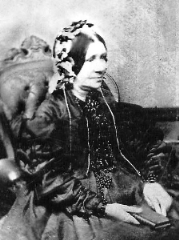
Frederick was working as a Clerk and lodging in rooms with Harriet Dean and her companion Jane Enmon in a house on Belsize Road in Hampstead. Ten years later, he was living in the same house but had moved into his own rooms and was living with and supporting his mother. His occupation in the census record appears to be abbreviated and sadly rather unclear: Clk Cpyhd Inclosure + Title Comm. This has been overwritten with the initials ‘CS’ which could indicate that his position was classified as being in the civil service. Family notes indicate that Frederick worked as an artist and writer for Lloyds Sunday News and also wrote and sketched for Punch magazine and it is possible he worked there prior to joining the civil service but from 1871 onwards, he is consistently listed as a clerk in the census records.
On 22 October 1881, forty-five year old Frederick married Elizabeth Dean at St Mark’s in Battersea. Elizabeth was born in Loughborough, Leicestershire in 1858 making her 22 years younger than Frederick. Her father was listed as John Dean, a licensed victualler, but it is not known if she was any relation to Frederick’s previous landlady, Harriet Dean.
Harriet Willis died in Wandsworth in the early months of 1885 and was buried next to her husband at All Souls Cemetery. When she signed her will in November 1882, she listed her address as 76 Belville Road in Wandsworth and was likely still living with her son Frederick and his new wife. Harriet left her wardrobe, trinkets and numerous pieces of jewellry, including an amethyst ring, a gold bracelet with emeral and pearl and topaz rings, to her daughters Louisa and Charlotte. She also left her gold watch to her grand-daughter Harriet. Louisa received an additional legacy of £78 while Charlotte received the remainder of her estate not specifically bequeathed in her will. The only legacy for Thomas was his mother’s gold eyeglasses while Philip received all of his own books in his mother’s possession. There were no legacies for George or William but Frederick received her ‘silver cruet stand, two hot water jugs, the large old china bowl and my household furniture, crockery and glass.’
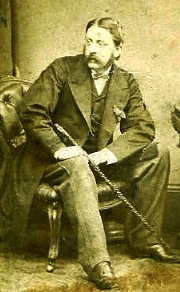
By 1891, Frederick and Elizabeth had left London and were living in Ilford, Essex where Frederick worked as a Clerk for the Board of Agriculture. They likely moved to Essex due to Frederick’s job but by 1901, they were back in south London and living in Cheriton Square in Streatham. By 1911, they had moved further out of the expanding city and were living in a six room house at 106 Richmond Road in Thornton Heath, Surrey. Seventy-four year old Frederick was still working at the Board of Agriculture and Fisheries and was commuting to their offices in St James Square in London.
Following his mother’s death, Frederick was the only known member of the family still living in England. William has not been located in any census or parish records since 1851 so it is not know if he too emigrated or died earlier in England. In 1900, his brother George was living at 321 State Street in St Joseph, Michigan and at 73, was still working as a decorator. George died in St Joseph, aged 90 years, on 5 January 1916.
Philip never returned from Australia and died, aged 92 years, in North Fitzroy in Melbourne in 1920. Likewise, his sisters Louisa and Charlotte never visited England again after leaving for Canada nor is there any evidence that their family visited them. Louisa died in Victoria, British Columbia, aged 94 years, on 28 September 1925 and her sister Charlotte followed on 7 January 1929, aged 96. Frederick died at his home at 109 Richmond Road in Thornton Heath on 26 March 1929, aged 93 years, and probate on his £370 estate was granted to his wife Elizabeth.
